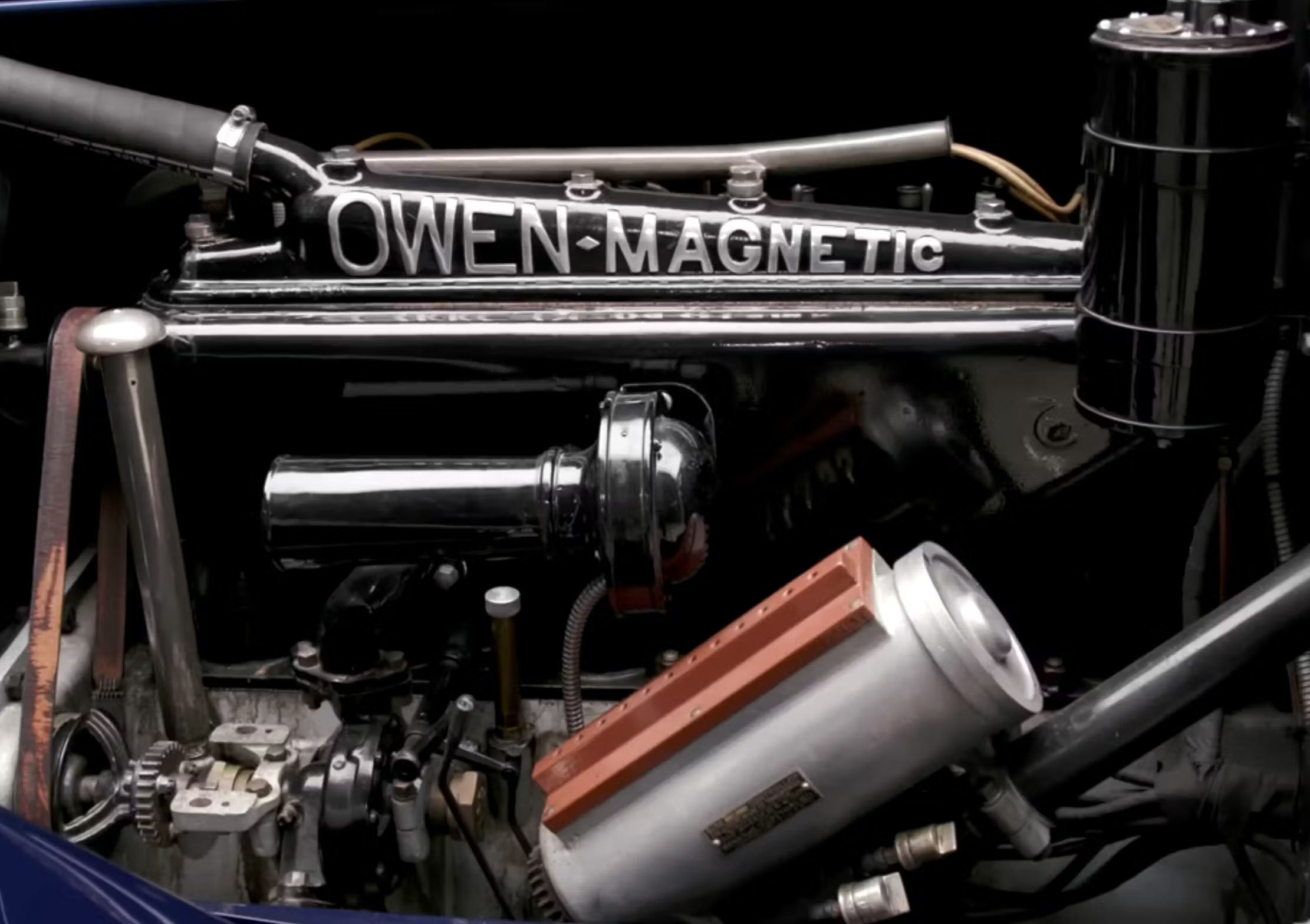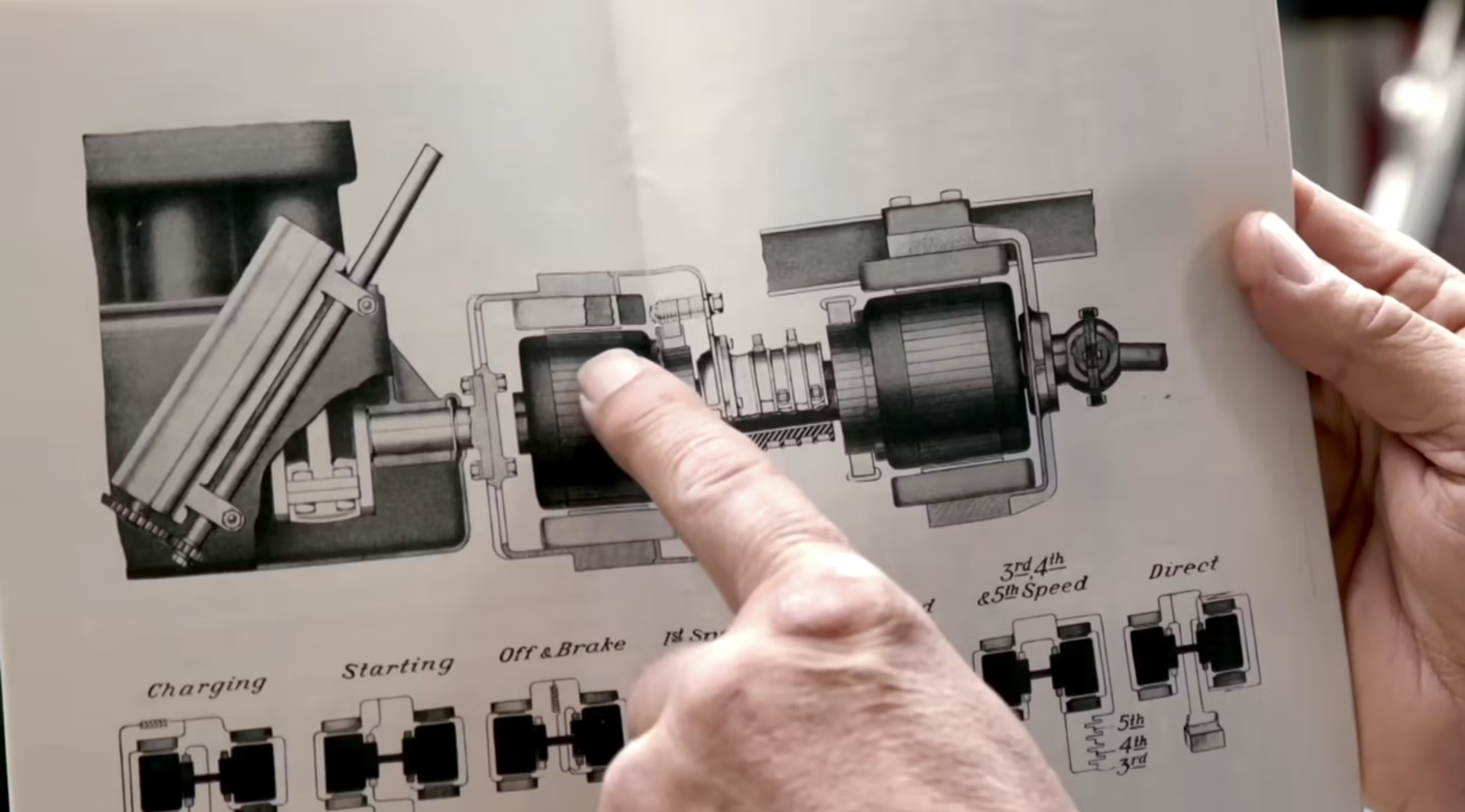Driving the Future in 1916
This story first appeared in the September/October 2024 issue of Hagerty Drivers Club magazine. Join the club to receive our award-winning magazine and enjoy insider access to automotive events, discounts, roadside assistance, and more.
Rolls-Royce likes to say that Charles Rolls predicted the electric car back in 1903 because it was the simplest, the most powerful, and the most silent form of propulsion. Well, it took Rolls-Royce a while, and for a long time, they weren’t exactly cutting-edge. In 1949, they said they built the best cars in the world, but they had six-cylinder engines with carburetors and floor shifts when Cadillacs offered overhead-valve V-8s, automatic transmissions, power windows, and air conditioning. “The loudest thing you can hear is the clock,” Rolls said. Yeah, because it was a noisy clock, that’s why you heard it!
But I was out test-driving the new electric Spectre and, finally, Rolls-Royce is building a car that is exactly what a Rolls-Royce should be. It was hands down the quietest car I have ever driven. In fact, at one point, I looked in the mirror and saw fire-engine lights behind me, but I didn’t hear anything. So I just figured they were running with their lights on but no siren. Then they pulled up alongside me and I heard these little squeaks, so I put the window down and WOOOOWOOOOWOOOOWOOO! That tri-
ple-pane glass is amazing—the fire truck was right next to me and I could barely hear it! I could see myself plowing down pedestrians, not realizing that people were pounding on the side of the car trying to save their lives.
Back to predicting the future, I recently got my 1916 Owen Magnetic running again, and that is one car that was way ahead of its time. They called it “The Car of a Thousand Speeds” and “The Car That Runs on Magnetism,” and though I have owned the Owen a long time and we’ve spent years restoring it, I have to admit that I don’t fully understand how it works. It had a hybrid gasoline-electric powertrain and it had a 24-volt electrical system when many cars still had magnetos and no electric system. In fact, it operated much like the Chevrolet Volt that we put 90,000 miles on here at the shop, down to its regenerative braking, but it came out a century earlier.
Justus Bulkley Entz was the type of crazy genius I like to celebrate here in my Collection of Noble Failures. A protégé of Thomas Edison, Entz had his name on a number of Edison patents and earned pretty good royalties off them. He became obsessed with electric cars and designed an electric taxi, but he quickly ran up against the limits of 19th-century electrical power—few houses had service back then, and batteries were heavy and didn’t last. Figuring a gas engine turning a generator would be a good solution, he designed his “electric transmission.” It took about 15 years to get it into production, after the design was licensed by the Owen brothers, Raymond and Ralph, who built the cars first in New York, then Cleveland.

In the Owen, there is no direct connection between the engine and the rear wheels. Instead of a clutch on the back of the engine—in my car, a then fairly common Buda six-cylinder—a magnet spins around an armature fitted to the end of a hollow shaft. As the engine revs, the spinning magnet generates electromagnetic force in the armature that turns the shaft. As engine speed goes up, so does the armature speed. The armature’s shaft goes to a motor-generator farther back that actually turns the driveshaft and wheels. No slipping clutch, no grinding gears, just seamless power.

Instead of a shift lever, a nine-position rheostat on the steering wheel controls the various modes of the transmission. There is a dedicated charging mode, a neutral mode, four “speeds” that change the motor output, and a “high” mode in which the engine-driven magnet and armature are effectively locked together and the rear motor turns into a generator for recharging the batteries. By the way, all of this is done without a computer.
The car could go 60 mph, and it was one of the quietest gasoline-powered cars around, one reason it was said to be favored by famous opera singers of the day such as Enrico Caruso. The problem was that it was so complicated and expensive to make that it cost around $6000 at a time when a Ford Model T cost $360, and so by 1921, it was all over. The Owen Magnetic is one of the most unusual cars I have. Nothing else is like it in the garage—well, except our Chevy Volt.



The genius of humans is really timeless. So many ideas of what we think of as modern were actually conceived, and often executed in the late 19th and early 29th centuries.
IF research & development on electric cars had of continued from there to now–Imagine how good electric cars would be Now–
Better yet, imagine how advanced the industry would have become if the oil and gas companies had not stifled progress and innovation.
Amen.
I personally think a combustion engine being used as a power generator for an electric motor is the way to go. Let’s skip the heavy battery part and go for something that is easily implemented while proper battery tech is developed.
Hmmm… Sounds like the current Diesel-electric locomotives. Interesting. Mr. Entz was definitely on his game.
Another early hybrid was the Woods Dual Power, which we covered here at Hagerty: https://www.hagerty.com/media/automotive-history/it-wasnt-the-first-hybrid-but-the-1917-woods-dual-power-was-an-electrically-assisted-marvel/
Some sources say that the Woods hybrid used an Entz transmission like the Owens Magnetic but while both cars were serial hybrids they used completely different systems on the electrical side.